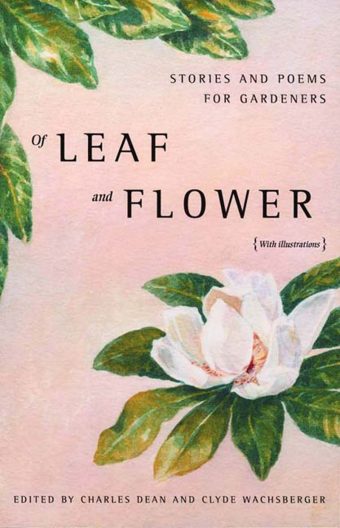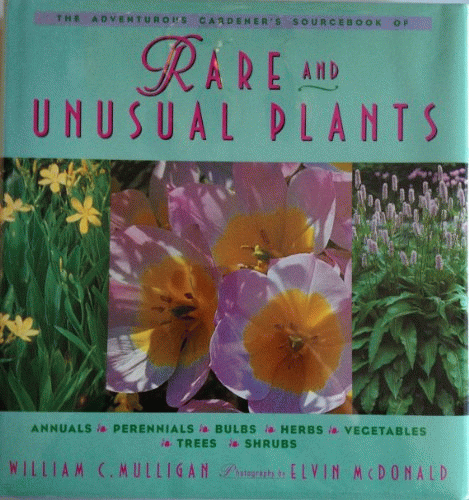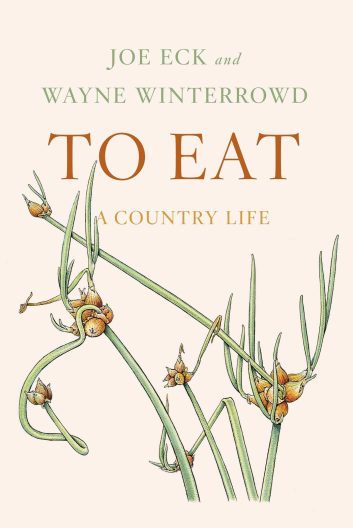


With its stylized but clearly recognizable illustrations, Plants on the Move introduces readers of all ages to the various ways plants travel and multiply. It is divided into sections by type of movement: plants that creep or explode of their own accord, and those that move with the aid of wind, water, or the help of mammals, birds, and ants, including those that carry, drop, or ingest their fruits and leave the seeds behind. Humans also help distribute plants, both inadvertently and intentionally.
Especially entertaining are the cutaway diagrams of the digestive tracts of a blackbird and a mouse, mapping the journey of a berry from one end to the other. The charming illustrations do an excellent job of representing traits of some plants that are prolific spreaders if not downright invasive: note the bursting seedy artillery of impatiens and violets (which also have reaching stolons), the hooked fruits of burdock, the creeping tendencies of buttercup, and the tunneling habits of lily of the valley.
The section on cultivated plants explains the role of anthropochory (plant movement generated by human intervention), and lists many plants that now exist worldwide because we saved seeds, transported, and planted them. There is a short list of other scientific terms (all ending in –chory) which are so effectively illustrated throughout the book.
Reviewed by Rebecca Alexander
 Clyde Wachsberger became an avid gardener in his mid-30s after acquiring a small house and property at the eastern tip of Long Island, New York. While the garden was his passion, it was a lonely pursuit and he longed to share it with someone. However, his efforts to find a relationship with another man, “a friend who shared my deepest yearning to be someone special for someone special,” were not successful.
Clyde Wachsberger became an avid gardener in his mid-30s after acquiring a small house and property at the eastern tip of Long Island, New York. While the garden was his passion, it was a lonely pursuit and he longed to share it with someone. However, his efforts to find a relationship with another man, “a friend who shared my deepest yearning to be someone special for someone special,” were not successful.
Some years later, and by a remarkable chance with a misplaced personal ad, he connected with Charles Dean, a maître d’hôtel at a high end Manhattan restaurant. Sparked by their mutual interests and attraction, they quickly established a relationship, much of it built around the same home and garden they now shared named Adworthy House, celebrating their meeting.
They were great experimenters and always eager to try new plants, pushing the limits of their climate zone and indulging in romantic fantasies of tropical flora. Winter reading of nursery catalogs was a special fascination. Together they edited an anthology entitled “Of Leaf and Flower: Stories and Poems for Gardeners (2001), in part to “explain the profound passions and wild obsessions that motivate gardeners.”
Sadly, Dean and Wachsberger’s time together was limited to about 15 years. Wachsberger developed cancer, but before it took his life, he wrote and illustrated a heartfelt memoir, “Into the Garden with Charles” (2012). While the author did not minimize the story of his disease, his writing focuses on the strength he found in both the garden and his loved ones.
While the after story is sad, this is an upbeat book about the joy of optimism found in a love of plants, and in the often whacky stories of family, close friends, and a faithful, fuzzy mop of a dog. The plants are pets, too, often with personal names and always cherished, until they try to smother or overrun everything else. Gardeners everywhere will understand.
Reviewed by Brian Thompson in the Fall 2022 issue of the Arboretum Bulletin
 Clyde Wachsberger became an avid gardener in his mid-30s after acquiring a small house and property at the eastern tip of Long Island, New York. While the garden was his passion, it was a lonely pursuit and he longed to share it with someone. However, his efforts to find a relationship with another man, “a friend who shared my deepest yearning to be someone special for someone special,” were not successful.
Clyde Wachsberger became an avid gardener in his mid-30s after acquiring a small house and property at the eastern tip of Long Island, New York. While the garden was his passion, it was a lonely pursuit and he longed to share it with someone. However, his efforts to find a relationship with another man, “a friend who shared my deepest yearning to be someone special for someone special,” were not successful.
Some years later, and by a remarkable chance with a misplaced personal ad, he connected with Charles Dean, a maître d’hôtel at a high end Manhattan restaurant. Sparked by their mutual interests and attraction, they quickly established a relationship, much of it built around the same home and garden they now shared named Adworthy House, celebrating their meeting.
They were great experimenters and always eager to try new plants, pushing the limits of their climate zone and indulging in romantic fantasies of tropical flora. Winter reading of nursery catalogs was a special fascination. Together they edited an anthology entitled “Of Leaf and Flower: Stories and Poems for Gardeners” (2001), in part to “explain the profound passions and wild obsessions that motivate gardeners.”
Sadly, Dean and Wachsberger’s time together was limited to about 15 years. Wachsberger developed cancer, but before it took his life, he wrote and illustrated a heartfelt memoir, “Into the Garden with Charles” (2012). While the author did not minimize the story of his disease, his writing focuses on the strength he found in both the garden and his loved ones.
While the after story is sad, this is an upbeat book about the joy of optimism found in a love of plants, and in the often whacky stories of family, close friends, and a faithful, fuzzy mop of a dog. The plants are pets, too, often with personal names and always cherished, until they try to smother or overrun everything else. Gardeners everywhere will understand.
Excerpted from Brian Thompson’s article in the Fall 2022 issue of the Arboretum Bulletin
 Henry Stuart Ortloff and Henry Bond Raymore established a landscape architectural firm in 1924, when both men were in their late 20s. They lived and worked for over 40 years at Apple Green, a late 18th century house in Huntington, New York on Long Island that was their combination home and office. According to Steve Whitesell, a landscape architect who completed a master thesis about the partnership, they “wrote frequently and eloquently on the development of the small residential garden.”
Henry Stuart Ortloff and Henry Bond Raymore established a landscape architectural firm in 1924, when both men were in their late 20s. They lived and worked for over 40 years at Apple Green, a late 18th century house in Huntington, New York on Long Island that was their combination home and office. According to Steve Whitesell, a landscape architect who completed a master thesis about the partnership, they “wrote frequently and eloquently on the development of the small residential garden.”
Their writing included numerous books and articles, and they were frequent speakers to garden clubs and plant societies. “The Book of Landscape Design,” published in 1959, summarizes many of their mature ideas about designing both a beautiful home garden and an inviting, public landscape.
It is still well worth reading, both for gaining an understanding of complex design concepts, and as a reminder of the importance of good horticultural practices. “If the principles of plant ecology are applied to the home landscape, many disappointments will be avoided and a much more permanent and harmonious grouping together of plants will be achieved.”
Whitesell indicates their partnership “was personal, as well as professional,” concluding that “both men were discreet about this aspect of their lives, but they cohabitated openly and their partnership was apparently acknowledged and accepted by neighbors, clients, editors, and associates.”
A search of the archives of “The Long-Islander”, a weekly newspaper published in Huntington, New York, finds frequent references to both. In the summer of 1949, they traveled to the UK and France, and Raymore sent biweekly journal reports of their travels to the newspaper, including commentaries on the dreadful food in post-war Britain and the pleasures of punting on the River Cherwell at Oxford.
Excerpted from Brian Thompson’s article in the Fall 2022 issue of the Arboretum Bulletin
Henry Stuart Ortloff and Henry Bond Raymore established a landscape architectural firm in 1924, when both men were in their late 20s. They lived and worked for over 40 years at Apple Green, a late 18th century house in Huntington, New York on Long Island that was their combination home and office. According to Steve Whitesell, a landscape architect who completed a master thesis about the partnership, they “wrote frequently and eloquently on the development of the small residential garden.”
Their writing included numerous books and articles, and they were frequent speakers to garden clubs and plant societies. “A Book about Soils for the Home Gardener” is one of the earliest on this topic for a general audience.
Whitesell indicates their partnership “was personal, as well as professional,” concluding that “both men were discreet about this aspect of their lives, but they cohabitated openly and their partnership was apparently acknowledged and accepted by neighbors, clients, editors, and associates.”
A search of the archives of “The Long-Islander”, a weekly newspaper published in Huntington, New York, finds frequent references to both. In the summer of 1949, they traveled to the UK and France, and Raymore sent biweekly journal reports of their travels to the newspaper, including commentaries on the dreadful food in post-war Britain and the pleasures of punting on the River Cherwell at Oxford.
Excerpted from Brian Thompson’s article in the Fall 2022 issue of the Arboretum Bulletin
Henry Stuart Ortloff and Henry Bond Raymore established a landscape architectural firm in 1924, when both men were in their late 20s. They lived and worked for over 40 years at Apple Green, a late 18th century house in Huntington, New York on Long Island that was their combination home and office. According to Steve Whitesell, a landscape architect who completed a master thesis about the partnership, they “wrote frequently and eloquently on the development of the small residential garden.”
Their writing included numerous books and articles, and they were frequent speakers to garden clubs and plant societies. “Annuals and Biennials” is an example of a solo work by Ortloff, dedicated “To My Friend, Henry Bond Raymore.”
Whitesell indicates their partnership “was personal, as well as professional,” concluding that “both men were discreet about this aspect of their lives, but they cohabitated openly and their partnership was apparently acknowledged and accepted by neighbors, clients, editors, and associates.”
A search of the archives of “The Long-Islander”, a weekly newspaper published in Huntington, New York, finds frequent references to both. In the summer of 1949, they traveled to the UK and France, and Raymore sent biweekly journal reports of their travels to the newspaper, including commentaries on the dreadful food in post-war Britain and the pleasures of punting on the River Cherwell at Oxford.
Excerpted from Brian Thompson’s article in the Fall 2022 issue of the Arboretum Bulletin
 Elvin McDonald was a precocious horticulturist. In order to learn more about growing gloxinias, he started what is now the Gesneriad Society and its journal “Gesneriads” when he was only 14, while still working on his family’s farm in Oklahoma. After studying opera performance at Mannes School of Music in New York City, he embarked on a long career in horticulture as a writer and a photographer. He has authored or contributed to upwards of 100 books.
Elvin McDonald was a precocious horticulturist. In order to learn more about growing gloxinias, he started what is now the Gesneriad Society and its journal “Gesneriads” when he was only 14, while still working on his family’s farm in Oklahoma. After studying opera performance at Mannes School of Music in New York City, he embarked on a long career in horticulture as a writer and a photographer. He has authored or contributed to upwards of 100 books.
In a 1978 column of Plant Talk published in the Chicago Tribune, McDonald tells of an adventure with his friend William Mulligan, visiting orchid greenhouses. Mulligan was also an accomplished author of horticulture books, best known for his writing on lattices and trellises, and on prominent North American gardens. In Mulligan’s 1995 obituary in the New York Times, after dying from complications of AIDS at age 52, he is described as being survived “by his companion and frequent writing collaborator, Elvin McDonald.”
Most notable of these collaborations is “The Adventurous Gardener’s Sourcebook of Rare and Unusual Plants,” written by Mulligan with photographs by McDonald and published in 1992. One of the treasures of my personal library is a copy of this book inscribed by both men.
As the title promises, this book is a source for both viewing and purchasing remarkable plants. Unfortunately, 30 years later, these resources are often out of date, but this is still a book I recommend.
Why? For the many great ideas of new plants to try! While some have become commonplace in subsequent years, many have not and are worth seeking out. Mulligan addresses any concerns you might have about this habit. “By only pursuing esoteric species is the adventurous gardener a snob? Not at all. Just curious, opinionated, and appreciative of details.”
McDonald was profiled in the March/April 2022 issue of “The American Gardener” by Kelly D. Norris. Now 85, he has continued an active career in horticulture, including work that was instrumental in the development of the Greater Des Moines Botanical Garden in Iowa, where he lives with his husband, John Zickefoose.
Excerpted from Brian Thompson’s article in the Fall 2022 issue of the Arboretum Bulletin
 Joe Eck and Wayne Winterrowd shared over 40 years together, most of it at a home they called North Hill in Readsboro, Vermont. This is a long time for any couple, but especially noteworthy for gay men. Their garden inspired many books, written by each singly or by both. The Miller Library has eight of their titles on subjects that include annuals, tender perennials, roses, and garden design. Winterrowd’s “Annuals for Connoisseurs” (1992) is one of my personal favorites.
Joe Eck and Wayne Winterrowd shared over 40 years together, most of it at a home they called North Hill in Readsboro, Vermont. This is a long time for any couple, but especially noteworthy for gay men. Their garden inspired many books, written by each singly or by both. The Miller Library has eight of their titles on subjects that include annuals, tender perennials, roses, and garden design. Winterrowd’s “Annuals for Connoisseurs” (1992) is one of my personal favorites.
Eck and Winterrowd met in a gay nightclub in Boston during the late 1960s. Often such encounters are brief, but they spent much of the night talking together and walking the Boston Common. They never parted. Eager for a rural life, they found their Vermont home a few years later, initially making their living as school teachers before transitioning to full-time garden designers and authors.
Most of their books celebrate the many aspects of their life together at North Hill, including raising a son. Their final book, “To Eat: A Country Life” was started jointly in 2010, but after Winterrowd died suddenly that fall, Eck was left to finish it alone. The book was published in 2013. The men shared many passions, but eating had “always been central.”
Bobbi Angell, a noted botanical artist who lived near North Hill, provided the illustrations for “To Eat.” She also has an essay in the book about a lunch with the couple shortly before Winterrowd’s death. In a conversation musing about their place in rural Vermont, she concludes: “Wayne and Joe’s life–their plants, their friends, their stories–came from around the world, city and country alike.”
Excerpted from Brian Thompson’s article in the Fall 2022 issue of the Arboretum Bulletin
Theodore (Ted) James, Jr. (as writer) and Harry Haralambou (as photographer) were prolific producers of gardening books. Beginning in 1985, they shared a home, dating from 1740, and a garden in Peconic, New York at the east end of Long Island. Their garden was featured in several of their books, many available in the Miller Library. The best in my judgment being “Specialty Gardens.”
James was a writer on a wide range of topics, including for the travel section of the New York Times and comedy material for theater and cabarets. His October 2006 obituary in the Times described him as having “a colorful life. His career took him all over the world. He loved people, parties and telling stories.”
The writing in “Specialty Gardens” showcases this latter skill, weaving fascinating tales of gardens and gardeners from around the world, always complimented by Haralambou’s photographs. James had a keen insight to the fanaticism of a special-interest gardener, and encourages the reader to consider joining their ranks. “Perhaps one of these will interest you, then preoccupy you, and then even addict and possess you. But not to worry, for gardening is a healthy, relatively inexpensive and rewarding pastime.”
A graduate of Princeton University in 1957, the obituary for James in the Princeton Alumni Weekly referred to his life-partner Harry Haralambou. “His dear friend Harry was his partner to the end. The class sends its sympathy to all those who knew this gentle man.” After his partner’s death, Haralambou published his first solo book in 2007, “North Fork Living,” about the community where he and James lived.
Excerpted from Brian Thompson’s article in the Fall 2022 issue of the Arboretum Bulletin